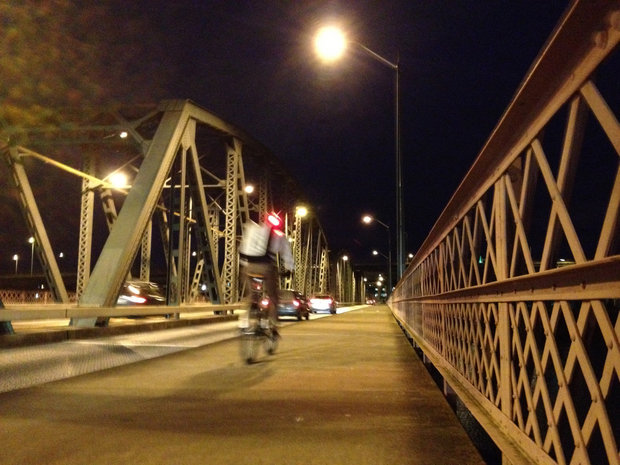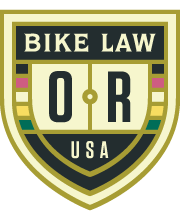This news article featuring Bob Mionske has been reproduced here for our archives. To access the original article, follow the link.
Slowtwitch: Bob Mionske on the 3-foot law
Written by: Dan Empfield
Date: Tue Nov 04 2014
The narrative on our reader forum last week troubled me. Taken at face value it seemed a California Highway Patrol officer predisposed against cyclists interpreted the state’s new 3-foot law as a way to take it out on a cohort he doesn’t like. Of course, there may be more to the story (there often is). Happily, if this officer is cyclist-averse, he’s likely in the small minority. I interviewed the CHP about this incident and about California’s 3-foot law in general.
Then I turned to Bob Mionske for his take. Bob is an Olympic cyclist and the dean of bicycle accident attorneys. More than that, he’s an expert on the rights of cyclists under the law. While California is not a state in which Mr. Mionske practices he’s well acquainted with the elements of California’s Motor Vehicle Code pertaining to cyclists.

SLOWTWITCH: With the advent of the 3-foot minimum buffer afforded bicyclists by a motorist when passing, a conflict created by the vehicle code can arise, and arose via a citation written in a rural part of San Diego County last week. When the Legislature passed the new 3-foot law there was no corresponding modification of Vehicle Code Section 21460, which restricts motorists from crossing a double yellow. My question: If, on a rural 2-lane road, an officer gives a motorist a citation for part of the vehicle crossing the double yellow in order to grant the cyclist room, assuming there was clearly sufficient room to do so without peril from an oncoming vehicle, what is the likeliest scenario in a courtroom if the motorist decides to contest this citation?
BOB MIONSKE: Technically, it’s against the law. However, two previous versions of this legislation explicitly allowed motorists to cross the double yellow line when safe to do so in order to pass a cyclist with at least 3 feet of safe passing distance. The first bill was vetoed by Governor Brown for an unrelated concern. The second bill was vetoed by Governor Brown over concerns that the State would be exposed to liability if a motorist made an unsafe pass across the double yellow line. This expressed concern was not realistic, because the state would only have allowed drivers to cross the double yellow line when it is safe to do so. A similar situation exists when the state allows drivers to make a right turn at a red light – it is only legal when the turn can be made safely. The failure of a driver to make a safe turn doesn’t expose the state to liability. And in fact, at least one other state – Colorado – allows drivers to cross the double yellow line when it is safe to do so, in order to give a cyclist 3 feet of safe passing distance.
Nevertheless, it is not legal to cross the double yellow line in California, and it is quite possible that a citation would be upheld in court. However, a motorist who is ticketed for crossing over the double yellow line might have a defense. It’s called a “necessity defense.” It means that the motorist is admitting that he broke the law, but it was necessary to break the law by crossing the double yellow line when it was safe to do so, in order to avoid breaking the law by passing too close to the cyclist. In this situation, the driver would argue that he was choosing the safest and most reasonable means of passing the cyclist, and shouldn’t be penalized for technically breaking the law.
However, the fact remains that the law does not allow drivers to cross the double yellow line to pass a cyclist, and in fact does allow the driver an alternative to crossing the double yellow line, so it seems unlikely that a “necessity defense” would be successful.
SLOWTWITCH: It would seem intuitive that the decision to mark a road double yellow as opposed to a broken yellow is based on engineering decisions contemplating cars passing other cars at high speed. Might the court agree and, if so, could the fact that a car is passing a cyclist, rather than a motorist, be a mitigating factor in the court’s decision, and could this be a reasonable defense by a motorist charged with a violation of 21460?
BOB MIONSKE: This is a very good point. The distance the driver must travel when passing a cyclist is much shorter than the distance traveled when passing a motor vehicle. Thus, it is safer for a driver to cross a double yellow line to pass a cyclist than it is to cross a double yellow line to pass another driver. This fact might help bolster a necessity defense, because although technically illegal, a driver might argue that it really is the safest and most reasonable option.
SLOWTWITCH: If a cyclist is riding as far to the right as is practicable under the law, can the new 3-foot law actually trigger a new legal peril for the cyclist, forcing him into violations of 22400, the “Minimum Speed Law?” Is this the vehicle code section that is most on point, or would 21656, obliging a slow moving vehicle on a 2-lane highway to use a turnout whenever 5 or more vehicles are lined up behind it, be more on point for a cyclist placed in this situation?
BOB MIONSKE: The minimum speed law would not apply, because the cyclist is already required to ride to the right when riding at a slower speed than other traffic – and in this case, the cyclist was doing exactly that. And in fact, the cyclist would be within his legal rights to take the entire lane when there is not sufficient room to safely share the lane side by side with a passing vehicle. But a cyclist taking the entire lane would be required to turn off the roadway at a safe location when there are 5 or more vehicles following.
It is not correct, however, to say that the new 3-foot passing law requires the cyclist who is riding as far to the right as practicable to turn off the roadway when 5 or more vehicles are following. Rather, the new law requires drivers to slow to a “safe and reasonable speed” and pass only when it is safe to do so, if they cannot pass with at least 3 feet of safe passing distance.
SLOWTWITCH: Immediately following VC 21750 – which is where the new 3-foot law is likely to sit on the vehicle code – is 21751, which is curious to me. It reads, “On a two-lane highway, no vehicle shall be driven to the left side of the center of the roadway in overtaking and passing another vehicle proceeding in the same direction unless the left side is clearly visible and free of oncoming traffic for a sufficient distance ahead to permit such overtaking and passing to be completely made without interfering with the safe operation of any vehicle approaching from the opposite direction.” To me, this subordinates to 21460, that is, 21751 has to assume a broken white or yellow. But the section does not say so. Could 21751 be an affirmative defense allowing a motorist to briefly cross the double yellow to grant the cyclist his buffer, if all the other requirements of 21751 were met?
BOB MIONSKE: Yes, 21751 is subordinate to 21460. Interestingly, had the new 3-foot law included its original provision allowing drivers to safely cross a double yellow line, the provisions of 21751 spell out when it would be safe for a driver to cross the double yellow line. In light of this, the Governor’s objection to the previous version of this bill is clearly not based on the actual provisions of California law.
SLOWTWITCH: In some cases a state or federal justice department will simply choose not to enforce a body of law. The U.S. Department of Justice stated earlier this year that they will not enforce state marijuana laws even though these laws conflict with federal laws. Can or do traffic courts in certain courtrooms, or counties, do this? Does the new 3-foot law qualify as a law that creates a small and isolated case where – when all requisite safety elements are met – 21460 strictly construed becomes an unreasonable requirement for drivers? In other words, might courts recognize the flaw in not modifying 21460 in concert with 21750, and give motorists leeway on 21460 that the legislature did not explicitly grant?
BOB MIONSKE: It is more likely that a necessity defense would be more successful in achieving this outcome than it would be for traffic courts to unilaterally decide not to uphold the law. And where a court might act unilaterally, it would obviously be consistent with the reasoning of the necessity defense.
But countering the “necessity defense” is the provision of the new 3-foot passing law that allows drivers to pass cyclists at a distance closer than 3 feet when it is safe to do so, after first slowing to a safe and reasonable speed.
The better solution would be for the legislature to amend the safe passing law to allow drivers to cross the double yellow line when safe, but the current Governor would be unlikely to sign that legislation. The next best solution might then be the widespread refusal to enforce the law, or to find motorists guilty of violating the law, when a driver safely crosses over a double yellow line to safely pass a cyclist. The tension created by this conflict in the law might eventually break the logjam in Sacramento and lead to the law being amended by a provision allowing drivers to safely cross the double yellow line when passing a cyclist.
***
Bob Mionske is a former U.S. Olympic and pro cyclist and a nationally-known bicycle accident lawyer based in Portland, Oregon, and affiliated with the Bike Law Network. A prolific advocate for the rights of cyclists, Mr. Mionske authored Bicycling & the Law in 2007, and has continued his advocacy on behalf of the rights of cyclists with his Road Rights column inBicycling Magazine.






